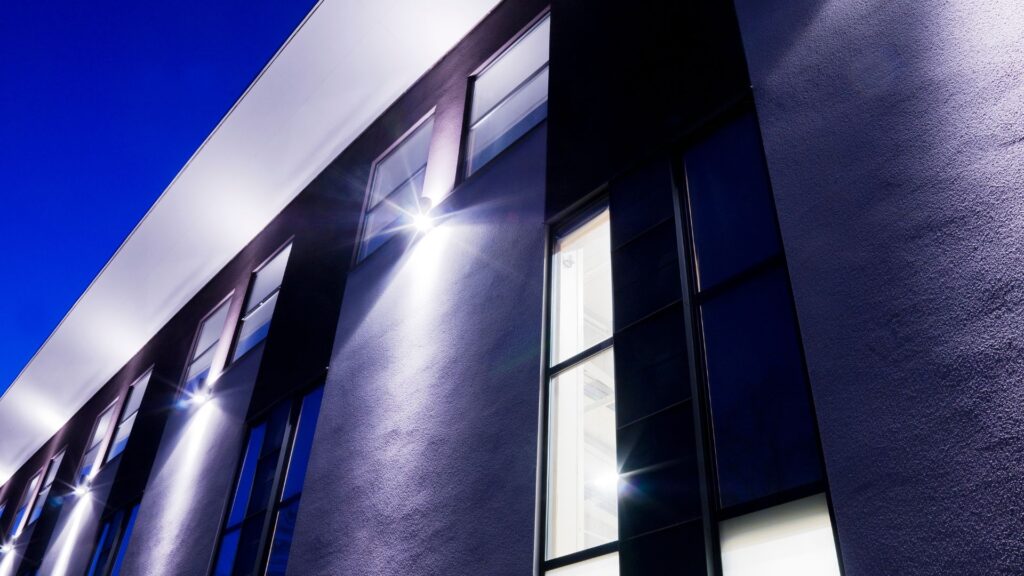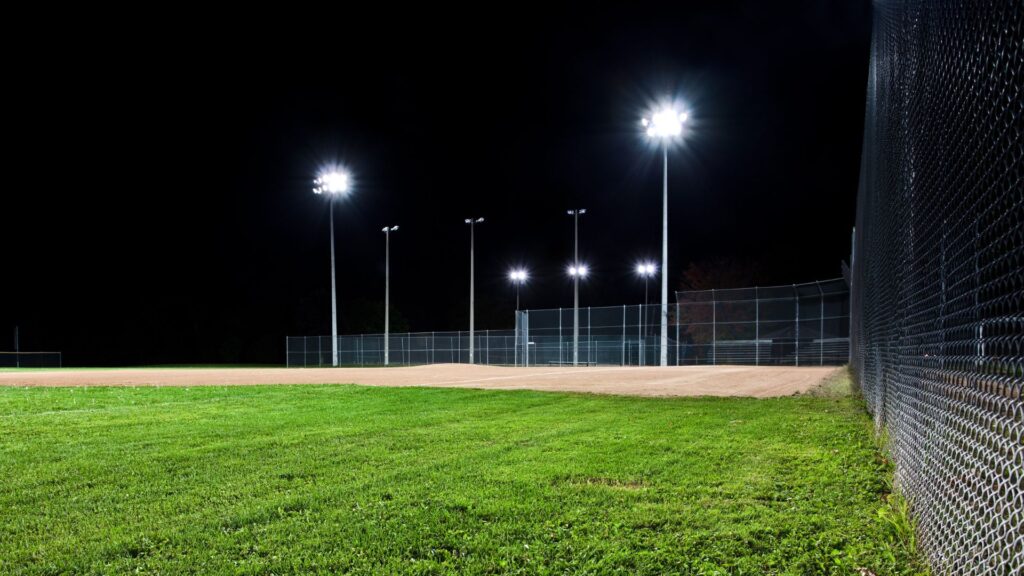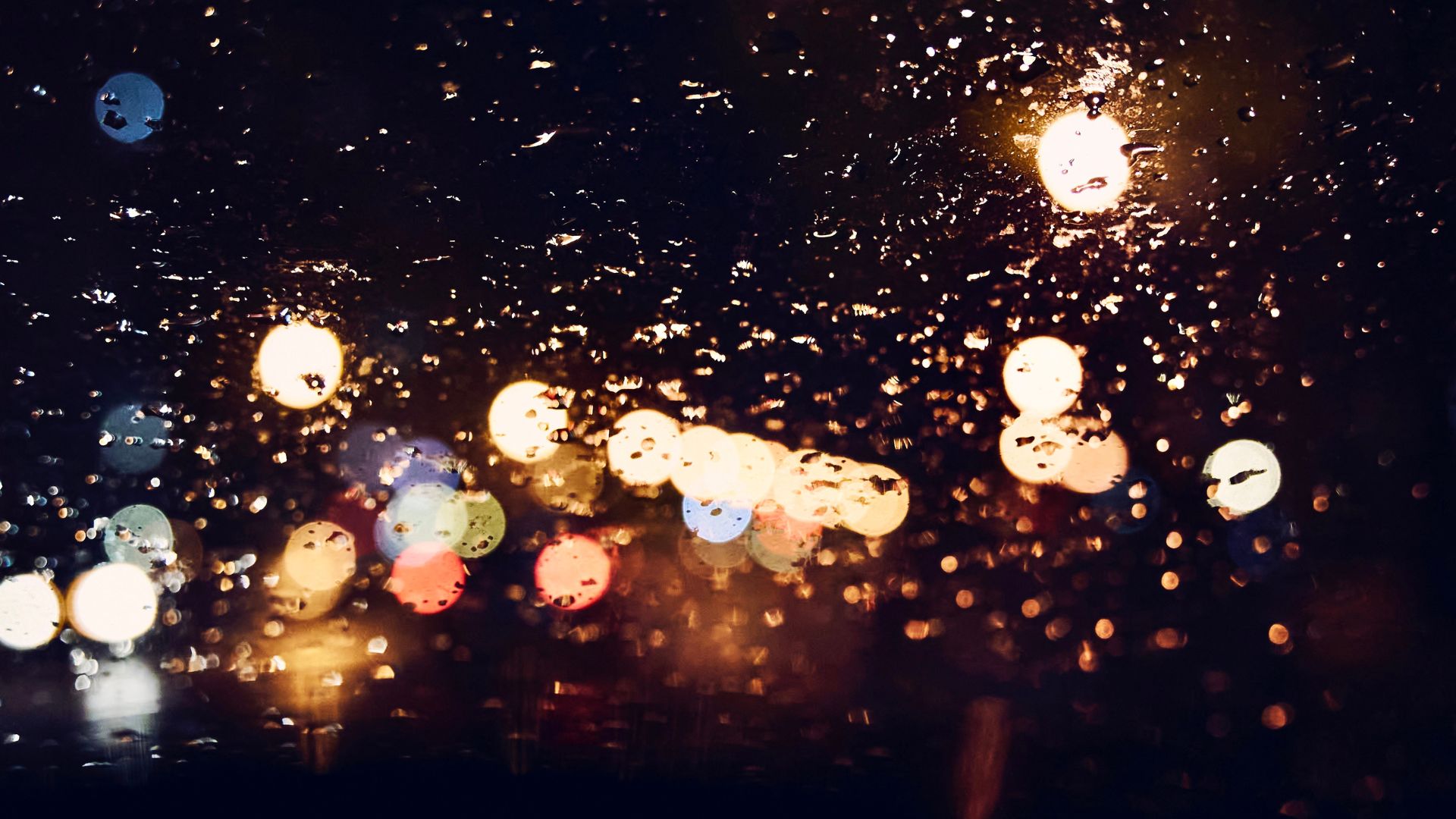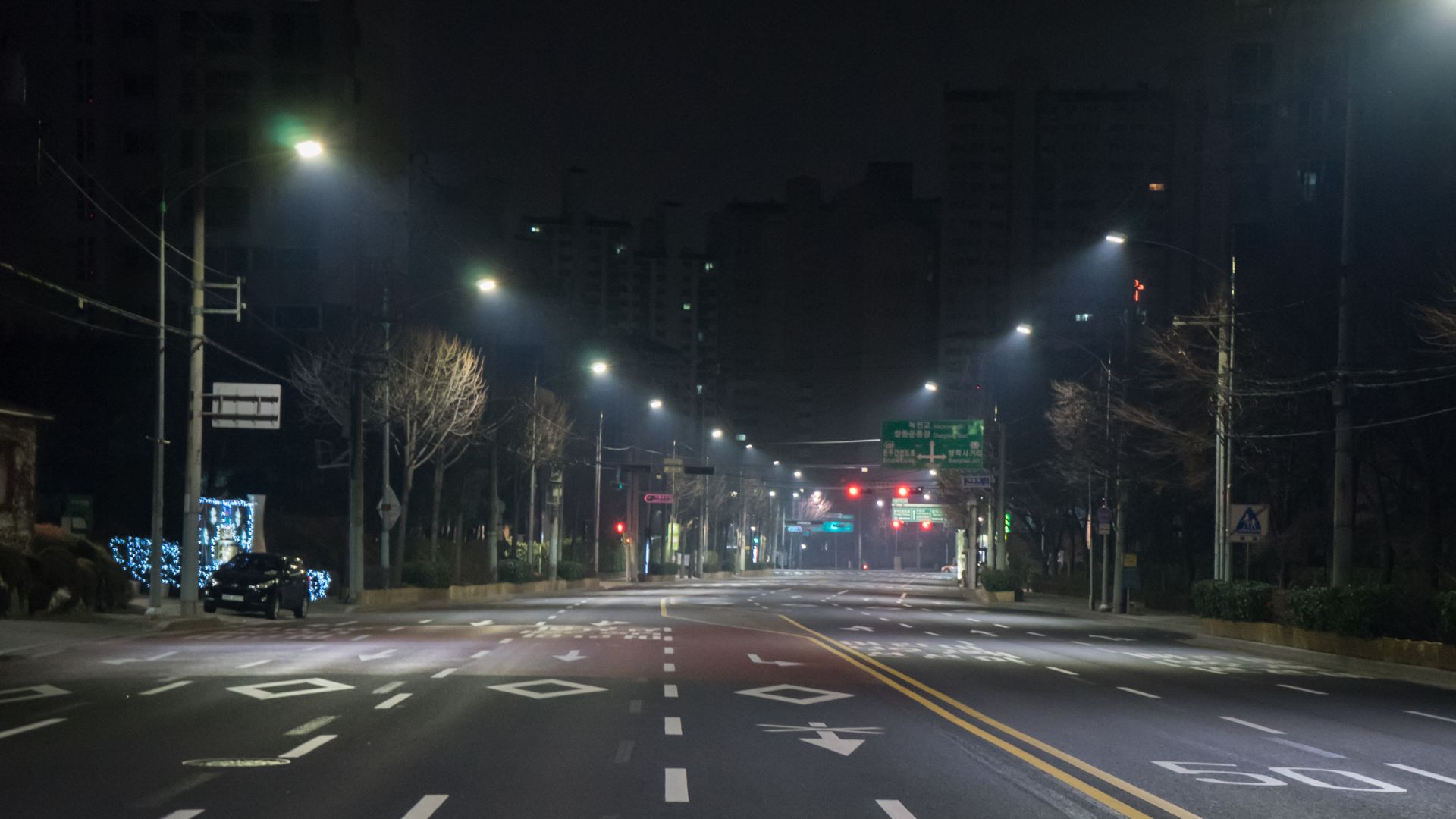Floodlights have become an integral part of modern lighting solutions, widely recognized for their robustness and versatility. Their ability to illuminate vast areas with powerful, broad-spectrum light makes them a staple in various applications, ranging from enhancing home security to lighting up sports stadiums.
The importance of flood lights cannot be understated. They serve a multitude of purposes, which include but are not limited to, providing enhanced visibility in outdoor settings, ensuring safety in public and private spaces, and contributing to aesthetic and functional lighting in commercial and artistic endeavors.
In residential settings, flood lights augment security by deterring potential intruders and illuminating dark areas, thereby reducing the risk of accidents. In commercial and industrial environments, they facilitate operations by providing adequate lighting for safe and efficient work. Additionally, in the realm of sports and entertainment, flood lights play a crucial role in ensuring events can be held irrespective of natural light conditions, thus extending hours of activity and enjoyment.

“The ubiquity of flood lights in our daily lives is a testament to their significance. From the glaring lights in a football stadium to the subtle illumination of a backyard, they have become essential in shaping our nocturnal landscape.”
This versatility of flood lights, coupled with advancements in technology, such as LED options, has further broadened their applications, making them an indispensable component of modern lighting solutions. As we delve deeper into the nuances of flood lights, it’s important to appreciate the role they play in not just illuminating spaces, but also in enhancing safety, productivity, and enjoyment in our everyday lives.
Understanding Floodlights
Definition and Characteristics for Flood Lighting
Flood lights are high-intensity, broad-beamed artificial lights, designed to illuminate a large area with a wide, even spread of light. These lights are distinguished by their high lumen output, which refers to the total quantity of visible light emitted. Typically, they feature a wide beam angle, usually between 90 to 120 degrees, enabling them to cover large spaces with consistent lighting.
A key characteristic of flood lights is their energy efficiency, especially in models using LED technology. These lights are designed for durability and longevity, capable of withstanding harsh weather conditions, which is critical for outdoor applications. Additionally, flood lights come in various sizes and are often housed in robust casings to protect them from environmental elements.
Why They Are Called “Flood” Lights
The term “flood” in flood lights is metaphorical and has no relation to water. It signifies the light’s ability to “flood” an area with illumination, similar to how a flood of water covers a large area. This nomenclature is used to contrast these lights with spotlights, which are designed to focus light on a specific, narrow location. Flood lights, with their wide beam angle, are capable of bathing a vast space in light, akin to a large-scale, luminous inundation.
Applications of Flood Lights
Illuminate Outdoor Sports Fields (Stadium) and Events
Flood lights are indispensable in outdoor sports venues, such as football fields, cricket grounds, and tennis courts, allowing for night games and extended training sessions. Their ability to simulate daylight conditions makes them crucial for broadcasting and ensuring both players and spectators have clear visibility.
Security and Residential Uses
In residential settings, flood lights play a pivotal role in security. They are often equipped with motion sensors and are used to deter trespassers and illuminate dark areas around homes, reducing the risk of accidents and intrusions. They also enhance the aesthetic appeal of buildings and landscapes when used creatively.
Industrial and Commercial Settings
In industrial and commercial environments, flood lights are essential for safety and operational efficiency. They are used in warehouses, construction sites, docks, and other large-scale workplaces where good visibility is paramount. In retail and hospitality sectors, flood lights are used not just for security, but also to highlight architectural features and create welcoming atmospheres.
Choosing the Right Flood Light
Factors to Consider: Purpose, Location, and Power Source
When selecting a flood light, it’s crucial to first understand its intended purpose. Whether it’s for security, sports, or general illumination will dictate the type of flood light needed. The location plays a significant role too, as it determines the light’s exposure to elements and the area it needs to cover. For instance, lights intended for coastal areas should be corrosion-resistant. The power source is another critical factor. Options include hardwired, solar-powered, and battery-operated flood lights, each catering to different installation environments and usage patterns.
Types of Bulbs and Their Advantages
- LED Flood Lights: Known for their energy efficiency, long lifespan, and low heat emission, LED flood lights are ideal for both indoor and outdoor use. They come in a range of brightness and color temperatures and are eco-friendly.
- Halogen Flood Lights: These provide brighter light than LEDs and are less expensive initially. However, they consume more power and have a shorter lifespan.
- Metal Halide Flood Lights: Offering a high level of brightness and color rendering, they are perfect for sports fields and large public areas. Their downside is a longer warm-up time and less energy efficiency compared to LEDs.
- High-Pressure Sodium Flood Lights: While not as bright as LEDs or metal halides, they are very energy efficient. They are often used in street lighting but emit a warmer, yellowish light.
Brightness and Color Temperature Selection
Choosing the right brightness (measured in lumens) and color temperature (measured in Kelvin) depends on the application. For security and sports, a higher lumen output is preferable for clear visibility. Color temperature affects the light’s appearance and mood – cooler temperatures (5000K-6500K) are often used for task lighting, while warmer temperatures (2700K-3000K) are suitable for accentuating architectural features.
Installation Guide for Flood Lights
Steps for Installing Flood Lights
- Safety First: Ensure the power is off before starting any electrical work.
- Choose the Location: Based on the area of coverage and the light’s purpose, select a suitable location.
- Mounting the Fixture: Depending on the type of flood light, it may require mounting on a wall, pole, or ground stake.
- Wiring the Light: For hardwired lights, connect the wiring to your power source, adhering to electrical codes. Solar and battery-operated lights usually don’t require complex wiring.
- Testing: After installation, test the light to ensure it functions correctly.
Positioning and Aiming for Optimal Illumination
Properly positioning and aiming the flood light is crucial for optimal illumination. The light should be
angled in such a way that it covers the desired area effectively without causing glare or light pollution. A common practice is to position the light at a 45-degree angle from the ground, which provides a good balance of coverage and intensity. If illuminating a building or specific object, adjust the angle to highlight the features effectively.
Common Installation Options: Wall-mounted, Ground-mounted, Pole-mounted
- Wall-mounted Flood Lights: These are ideal for lighting up outdoor areas like patios, driveways, and entrances. They should be mounted high enough to cast a wide area of light and reduce shadows.
- Ground-mounted Flood Lights: Typically used for landscape lighting, accentuating garden features, or illuminating pathways. They are installed on stakes driven into the ground and can be easily adjusted or moved as needed.
- Pole-mounted Flood Lights: Commonly used in commercial settings like parking lots or sports fields. The lights are mounted on tall poles to illuminate large areas. The height of the poles should be considered based on the area size and light spread required.
In all cases, it’s important to ensure that the flood lights are securely mounted and weatherproofed, especially in outdoor settings. Additionally, consider the direction in which the lights are aimed to avoid causing light pollution or disturbing neighbors.
Benefits of Flood Lights
Wide and Even Illumination
Flood lights are designed to provide a broad beam of light, which ensures wide and even coverage. This feature is particularly useful for illuminating large spaces like sports fields, parking lots, and expansive outdoor areas in residential properties. The uniform distribution of light helps in minimizing dark spots and shadows, enhancing visibility and safety.

Energy Efficiency and Cost-Effectiveness
Many modern flood lights, especially those using LED technology, are highly energy-efficient. They consume less power compared to traditional lighting solutions, leading to significant cost savings over time. Additionally, their long lifespan means reduced replacement and maintenance costs, making them an economically viable option for both residential and commercial users.
Versatility in Usage
Flood lights are incredibly versatile and can be used in a variety of settings. They are not only practical for security and visibility purposes but can also be used creatively in architectural and landscape lighting. This adaptability makes them suitable for diverse applications, from enhancing the aesthetic appeal of a building to ensuring the safety of a public space.
Maintenance and Troubleshooting
Routine Maintenance Tips
- Regularly clean the lenses to ensure optimal light output.
- Inspect and tighten any loose fittings or brackets.
- Check for and promptly replace any worn or damaged wiring.
- Replace bulbs as needed to maintain brightness.
Common Problems and How to Solve Them
- Burnt-out bulbs: Regularly check and replace bulbs to avoid decreased lighting efficiency.
- Moisture ingress: Ensure that all seals are intact and the fixture is properly waterproofed.
- Overheating: Make sure that flood lights are adequately ventilated to prevent overheating.
Troubleshooting Guide
- If the flood light is not working, first check the power source and ensure the circuit breaker has not tripped.
- For flickering lights, inspect the bulb connections and wiring for any loose connections.
- If the light is dimmer than usual, clean the lens and check if the bulb needs replacing.
Flood Lights in Security Lighting
Role in Security and Safety
Flood lights play a crucial role in enhancing security and safety. Their bright illumination deters potential intruders and increases visibility, reducing the risk of accidents and crime. The presence of flood lights can provide a sense of security in residential, commercial, and public spaces.
Motion Sensors and Additional Features
Many flood lights come equipped with motion sensors, which trigger the lights when
movement is detected. This feature not only enhances security by alerting to the presence of someone but also helps in energy conservation as the lights only turn on when needed. Other advanced features may include integration with security systems, adjustable timers, and smart controls that allow remote operation and customization of lighting schedules.
H2: Environmental Impact and Light Pollution
How to Avoid Light Pollution with Flood Lights
- Directional Lighting: Aim flood lights downwards to minimize sky glow.
- Shielding: Use fixtures with shields to direct light where it’s needed and prevent spillage into unwanted areas.
- Appropriate Brightness: Choose lights with suitable brightness levels for the area to avoid over-illumination.
- Timers and Sensors: Incorporate timers and motion sensors to reduce the duration of unnecessary lighting.
Environmental Considerations and Best Practices
It’s important to consider the impact of flood lighting on wildlife and the natural environment. Avoid using excessively bright lights in areas close to natural habitats. Opt for warmer color temperatures that are less disruptive to nocturnal wildlife and human circadian rhythms.
Legal Considerations and Restrictions
Understanding Legal Restrictions on Flood Lights
In many regions, including Australia, there are legal restrictions on the use of flood lights to prevent light pollution and ensure public safety. It’s important to understand and comply with these regulations to avoid legal issues and maintain good community relationships.
Specific Regulations in Australia
In Australia, regulations may include limits on the brightness and beam direction of flood lights, time restrictions (e.g., turning off lights after a certain hour), and requirements for environmental impact assessments in sensitive areas. Local councils or state regulations may dictate specific guidelines, so it’s important to consult local authorities before installing flood lights.
Conclusion
Flood lights have emerged as a pivotal component in modern lighting solutions, offering a blend of high-intensity illumination, energy efficiency, and versatility. Their ability to provide wide and even lighting makes them indispensable in a myriad of settings, from enhancing home security to facilitating sports events and industrial operations. The evolution of flood lights, especially with the advent of LED technology, has further cemented their role as a reliable and eco-friendly lighting option.
Final Thoughts and Recommendations
When considering flood lights for any application, it’s important to weigh factors like purpose, location, and the type of bulb to ensure you select the right fixture for your needs. Also, proper installation and maintenance are key to maximizing their effectiveness and lifespan. With the growing awareness of environmental impact and light pollution, choosing the right flood light and using it responsibly is crucial. Always stay informed about and comply with local regulations to ensure your lighting solutions are both effective and legally sound.
Frequently Asked Questions
Q: Can I install flood lights myself, or do I need a professional?
A: While some flood lights, particularly solar and battery-powered models, are designed for easy installation, it’s often advisable to hire a professional for hardwired options to ensure safe and correct installation, especially when dealing with high-power models or complex setups.
Q: How long do flood lights typically last?
A: The lifespan of a flood light varies depending on the type of bulb. LED flood lights can last up to 50,000 hours, while traditional halogen bulbs may need replacement after 2,000 to 4,000 hours of use.
Q: Are LED flood lights more expensive than traditional ones?
A: LED flood lights typically have a higher upfront cost but offer savings over time due to their lower energy consumption and longer lifespan.
Q: Can flood lights be used with dimmer switches?
A: This depends on the type of flood light and its compatibility with dimmer switches. Many modern LED flood lights are designed to be dimmable, but it’s important to check the product specifications or consult with the manufacturer to ensure compatibility.
Q: How do I choose the correct brightness for my flood light?
A: The brightness, measured in lumens, should be chosen based on the area you need to illuminate and the purpose of the lighting. Larger areas and applications requiring high visibility, like sports fields or security lighting, will need flood lights with higher lumen output.
Q: Can flood lights be used indoors?
A: Yes, flood lights can be used indoors, especially in large spaces like warehouses, gymnasiums, or for stage lighting. However, it’s important to choose a flood light with appropriate brightness and color temperature for indoor use.
Q: Are solar-powered flood lights effective?
A: Solar-powered flood lights can be very effective, especially in areas where wiring is impractical or for energy-saving purposes. Their performance depends on the quality of the solar panel and battery, as well as the amount of sunlight they receive.
Q: How do I prevent my flood lights from causing light pollution?
A: To minimize light pollution, use flood lights with directional beams, install them pointing downwards, use shields to control the spread of light, and avoid overly bright lights. Timers and motion sensors can also help by reducing the amount of time the lights are on.
References
- Lamp Shop Online. (n.d.). Your complete guide to floodlights. Retrieved from https://www.lampshoponline.com/advice/your-complete-guide-to-floodlights
- Lighting Style. (n.d.). Staying secure with outdoor flood lights. Retrieved from https://www.lightingstyle.com.au/staying-secure-with-outdoor-flood-lights.html
- Lepro. (n.d.). What is floodlight? Retrieved from https://www.lepro.co.uk/learning/what-is-floodlight/
Author
-
Johnny Wu
Specializing in SEO and digital marketing with a passion for enhancing online visibility. With over a year in the IoT industry, I focus on advancing roadway IoT and AI technologies to improve traffic management and road safety.



